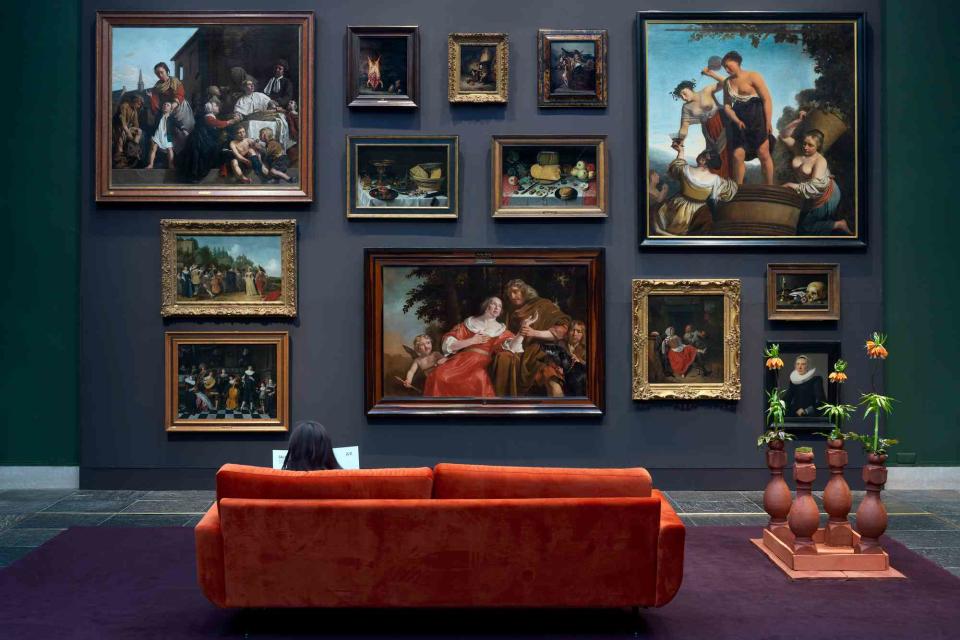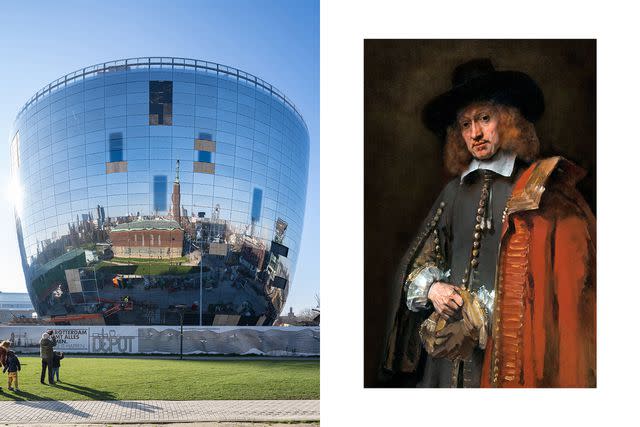I Moved to the Netherlands for Love — and Ended Up Learning Some Surprising Lessons in the Country’s Lesser-Known Museums
It turns out, 17th-century Dutch artists have a lot to say. Here are the best places to see their work.

Gert-Jan van Rooij/Courtesy of Frans Hals Museum
Dutch Golden Age paintings at the Frans Hals Museum in Haarlem, the Netherlands.More than 20 years ago, I fell in love. If he had been from Chicago, I would have moved to Chicago. But he was from Utrecht, so I moved to Utrecht. It seemed romantic to start a new life in the Netherlands — and it was. But it was also disorienting, and I found myself, to use a Dutch expression, in an upside-down world: in a new language, in a new culture, among people who, though they didn’t look much different from Americans, were the products of an entirely different history. I wanted to figure out who they were and who I might be in relation to them.
To add to the disorientation, I was also trying to figure out how to write. I wanted someone to tell me how, so I could crib their answers. But that’s not, alas, how it works. As I tried to get to know the country, I discovered quite a few people who seemed to be asking the same questions — about love and death and art and money, about how to see and how to be. Why do we make art? Who, and what, is an artist? How can art help us see ourselves, and how can it help us see others? How, to put it simply, are we to live?
The only problem was that these new friends had been dead for centuries — I was meeting them on the walls of the museums that dotted the country. As I got to know the artists of the era of Rembrandt and Vermeer, I marveled at the range and richness that Holland produced during its Golden Age. Beyond the most famous names and the most fabulous museums — and you can’t skip the Rijksmuseum, in Amsterdam, or the Mauritshuis, in the Hague — was a whole galaxy of other artists, and as I traveled around I discovered art in places I might not have thought to look if I had only been stopping over for a few days.
The best Rembrandt in Amsterdam, for example, might not be in the Rijksmuseum at all, but at the Six Collection, a mansion with an intact trove of 17th-century art. Rembrandt’s portrait of his friend Jan Six, mayor of Amsterdam, is on display in a house where Six’s descendants still live, and which you can visit by appointment. Members of the family wander in and out of the kitchen as you wander through their stunning collection. Many illustrious names are there, though the family’s two Vermeers ended up in the Rijksmuseum a hundred years ago. To see all this art together, gathered by generations of a single family, is to ask: how much of what we see is the product not of the artist’s vision, but of the collector’s?

From left: Ossip van Duivenbode/Courtesy of Museum Boijmans van Beuningen; Peter Horee/Alamy
From left: The Depot, which currently houses the works of the the Museum Boijmans van Beuningen; Rembrandtâs portrait of Jan Six, part of the Six Collection in Amsterdam.Then get on a train to Haarlem — it only takes about 15 minutes — and visit the Frans Hals Museum. Named for the city’s greatest painter, this museum, partly housed in what used to be a residence for elderly men, contains one of the country’s artistic treasures: Hals’s eight group portraits, to which van Gogh, Whistler, and other painters made pilgrimages. No matter how many other pictures by Hals you have seen, you will not be prepared for their size and impact. Hals’s life was full of tragedies, but the nebulous idea of inspiration, of the artist’s pleasure in his work, is somehow crystallized in that space. How does an artist find that inspiration, and how does he sustain it?
You could also go off the beaten track to the city of Zwolle to visit the Vrouwenhuis, or “Women’s House.” Like the Frans Hals Museum, the building was founded as an old-age home, albeit for women. It was also decorated with paintings by the women artists of the time, a collection unique in the Netherlands and, perhaps, in the world. Though Dutch women of the Golden Age were freer than women in other countries — a status that attracted comments both approving and otherwise from visiting foreigners — there were many obstacles to their achievement, and the place poses questions of its own. How does it change what we see when we know that a work of art was made by a woman? Is there, as many feminist critics have contended, an essential difference between men’s and women’s artistic expression?
In Rotterdam, the Museum Boijmans van Beuningen is closed for renovation, but instead of locking their works away, the museum has erected the Depot, a round modern building that bills itself as “the world’s first publicly accessible art storage facility.” It’s oddly riveting to see the museum’s 152,000 objects lined up, almost as if in a library. It made me wonder: How much of what we see in art is the way it’s displayed — the frame, the lighting, the architecture? How does it change a radiant masterpiece to see it filed away, matter-of-factly, in a place that looks like a glorified Walmart?
One thing I’ve learned through years of wandering this surprising country: In art and in life, the questions are almost always more interesting than the answers.
A version of this story first appeared in the November 2023 issue of Travel + Leisure under the headline "Master Class."
For more Travel & Leisure news, make sure to sign up for our newsletter!
Read the original article on Travel & Leisure.

